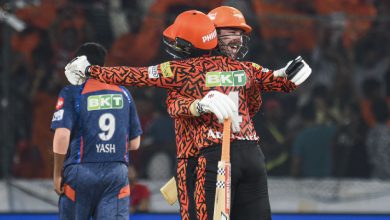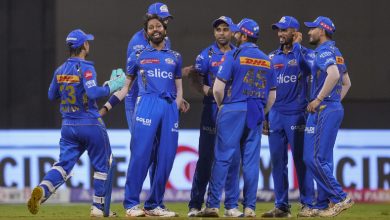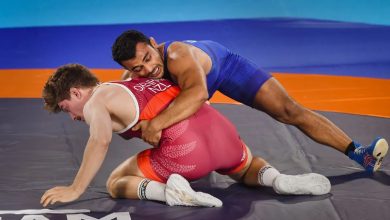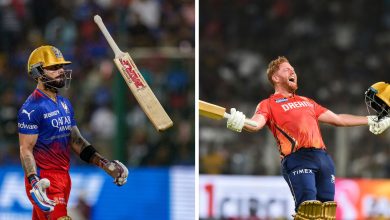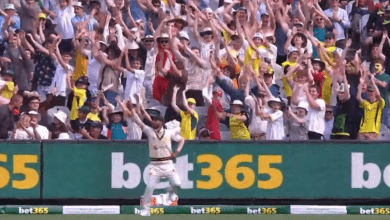Long Read: India eyes medals for shooting, but isn’t shooting for medals

The bizarre sequence of events would have dumbfounded even the best of satirs.
In mid-2019, fuming over the exclusion of shooting from the Birmingham Commonwealth Games, Indian Olympic Association general secretary Rajiv Mehta suggested that the country boycott the edition altogether. What seemed to be a stray remark snowballed into a major dispute after the organisation’s president, Narinder Batra, proposed that India should withdraw from the ‘colonial’ Games for good.
The twin statements were enough for the Commonwealth Games Federation top brass to embark on a firefighting mission to the Indian Capital. After a day of hectic parleys, the two sides came out of the meeting room with no resolution in sight – the CGF insed shooting had no place on the official Birmingham Games programme, and Batra said the option of withdrawal was still not off the table.
Let’s reminisce on #QBR2022’s unforgettable four day trip down under to Australia!
The Queen’s Baton was carried some of the worlds very best athletes. How many can you recognise?
Check out our highlights!@CommGamesAUS pic.twitter.com/PKGlVN1TBG
— Birmingham 2022 (@birminghamcg22) April 29, 2022
Just then, Mehta broke the awkward silence with an announcement that surprised most. India, he said, was ‘willing to host the CWG’ in 2026. Somehow, the IOA ended up expressing interest to host the very event they wanted to snub. On the dais, CGF president Louise Martin couldn’t suppress her smirk, perhaps realising that the threat of a boycott was nothing but posturing.
In less than 100 days, the Birmingham CWG will get underway without shooting. And to rub salt into India’s wounds, the sport – along with wrestling and archery – isn’t on the initial l of the 2026 CWG as well. Last week, yet again, IOA shot off a letter to Martin, ‘strongly’ recommending the inclusion of these three sports. The CGF, so far, hasn’t even bothered to reply.
It might be a popul move to protest shooting’s removal from the CWG. But frothing over the omission of a sport whose long-term future at the Olympics itself looks bleak has exposed the lack of imagination and foresight of the IOA bosses.
“Shooting has a serious problem (to stay in the Olympics) with its lead pellets,” says player-turned-sports executive Manisha Malhotra. “If shooting gets out, then what happens?”
Last month #QBR2022 spent four action packed days in New Zealand 🇳🇿 From a sunrise pōwhiri in Gisborne, to activities at Wellington College and a relay with the residents of Sir Murray Halberg Retirement Village in Auckland.
Check out our highlights here! pic.twitter.com/wNve6mZBE3
— Birmingham 2022 (@birminghamcg22) April 28, 2022
Instead, she adds, India has to start diversifying its interests. “You can’t keep sticking only to shooting, wrestling, archery for medals. You’ll never pass the medal tally you aspire to if you don’t look at new sports and infuse money into new sports,” she says.
Having the dinction of working closely with India’s two Olympic gold medalls, Abhinav Bindra and Neeraj Chopra, Malhotra knows how to be the best. It isn’t crying ‘conspiracy’ when a sport you are good at is dropped from an event in which the level is lower than even your national championship. It’s being proactive and anticipating what the future might look like.
Lesson from Down Under
In April 2013, the Australian Sports Commission, in a report titled ‘The future of Australian Sport’, noted how some sports were going ‘from extreme to mainstream.’
“International associations for skateboarding and rock climbing are making substantial efforts to have these included as Olympic sports in the future,” it remarked. The country had already started building ‘two skate parks per week’ before the study was published, making the sport accessible to thousands of skaters.
In 2016, skateboarding was officially included in the Tokyo Olympics. And when the sport made its debut at the delayed Games last year, Australia turned out to be the only country other than Japan to win a gold medal.
Wheelchair Basketball 3×3 makes its Commonwealth Games debut at #B2022, so we asked @TeamEngland’s @Shivvy_98 for five things you need to know about the sport. 🏀
Tickets are selling fast, so make sure you reserve your seat. Buy now at https://t.co/HczklAOMRA pic.twitter.com/1Ya0G1aIMO
— Birmingham 2022 (@birminghamcg22) April 27, 2022
Contrast their approach to India’s.
On the same day when skateboarding was inducted into the Games, surfing, too, was added to the programme. The water sport has retained its place for the Paris Olympics as well as the 2028 Los Angeles Games.
But six years after it became an Olympic sport, the Surfing Federation of India, which is affiliated to its world body, is yet to be recognised the government and the IOA. Government recognition, according to the National Sports Code, is ‘necessary to represent the country.’
For half a decade, surfing has been wading through bureaucratic waves. According to the Sports Code, at the time of applying for recognition, ‘the Federation/Association should have affiliated Units in at least 2/3rd of total States/UTs of India.’
#QBR2022 in Vanuatu! 🇻🇺
The Baton was taken on an amazing journey across the islands with many different modes of transport to ensure we got to see all Vanuatu has to offer.
Take a look at some of the best bits here. pic.twitter.com/0BHbT5k7yD
— Birmingham 2022 (@birminghamcg22) April 21, 2022
“We need around 24 affiliated state units but the issue is there are just nine coastal states and four such union territories in India. Since we haven’t been able to fulfil that clause, our recognition is pending. But we have had a constructive dialogue with the government and are hopeful of a positive outcome during our next meeting with them in May,” says SFI president Arun Vasu.
Rapidly-evolving Olympic programme
The situation in surfing is symptomatic of the larger trend, where India’s Olympic bosses have been unable to anticipate changes to a rapidly-evolving Olympic programme, thus playing catch-up. India has already experienced this once with hockey, in which it took 40 years for the country to return to the Olympic podium after being reluctant to accept changes.
Hockey India has learnt a lesson and been prompt to embrace 5s, a format likely to become part of the future Games. But the same can’t be said of other disciplines.
Five sports made their debut at the Olympics in Tokyo last year, and there was Indian representation in none. Breaking is the new addition to the programme at the Paris Olympics, and as per the World DanceSport Federation data, there are only four active breaking athletes in India, where the national federation isn’t recognised the IOA.
Dancing, celebrating, and scuba-diving, #QBR2022 had an incredible time in Grenada! 🇬🇩
Take a look at our favourite moments. pic.twitter.com/Ig2WKUxALV
— Birmingham 2022 (@birminghamcg22) April 9, 2022
For LA 2028, cricket is on the radar and there are reports of beach wrestling being included in the programme to complement the mat version, ala volleyball and beach volleyball. “There’s a whole slice of wrestling society that does sand dangals. So, we should do an analysis of how that can translate to beach wrestling, and start grooming those wrestlers now. There needs to be someone who sits down and strategises,” Malhotra says.
It isn’t just about the changing Olympics. Some of the newer sports might come and go, as it happened with karate and rug 7s. But even among the core disciplines, India’s participation rate is asmal.
Since the turn of the century, the country has not sent athletes in almost half of the sports. At the Sydney Games, India competed in just 13 out of the 28 sports. In Tokyo, the country’s athletes qualified in 18 out of 33 sports, competing in only 69 out of the 339 medal events.
Between them, athletics, swimming, cycling, gymnastics, wrestling, and canoeing account for 171 gold medals, 50 per cent of the total medals on offer. The top Olympic nations, including the US, China and Russia, have largely concentrated on these sports for a major chunk of their medals.
Of the six, India can only claim to be a serious player in wrestling and has a negligible presence in the other five. Chopra’s gold and Dipa Karmakar’s fourth place in Rio are exceptions in athletics and gymnastics; quite literally one in a billion in their respective sports.
Lack of focus
The failure otherwise is largely down to a lack of patience to take a long-term view. In that sense, cycling has been an outlier. No Indian has qualified for the Olympics in the sport, which had the third-most medals on offer in Tokyo after swimming (49) and athletics (48), since 1964. That, if the Cycling Federation of India is to be believed, could change in the ongoing cycle; their confidence rooted in a robust youth programme that has groomed a bunch of junior world champions, who are now finding their feet at the senior level.
Viren Rasquinha, also a player-turned-sports executive, underlines the need for a focused approach. “One strategy is to participate in more sports at the Olympics. That’s completely different to winning medals at the Olympics. To win more Olympic medals, you need to focus, and to focus, you have to delete, not add. There’s no right or wrong in this, it’s about your priorities – to win more Olympic medals, you have to go deeper into fewer sports,” the former India hockey captain says.
India’s strategy isn’t defined. And perhaps, that’s the reason shooting assumes so much significance. At Tokyo, it was seventh on the l of sports that offered the most gold medals, with 15. It’s a different story that India could not challenge for even one for two Games in a row. The health of the sport, Malhotra says, is better gauged the participation levels at national tournaments and that logic, shooting – which attracts thousands – has depth many sports would envy.
It’s all the more reason not to fuss over the sport’s omission from the CWG. “We should be looking at doing really well at the World Championships, Asian Games… especially in sports like shooting and wrestling,” Rasquinha says. “India has reached a stage where we should be looking at the larger picture, rather than worry about CWG.”



